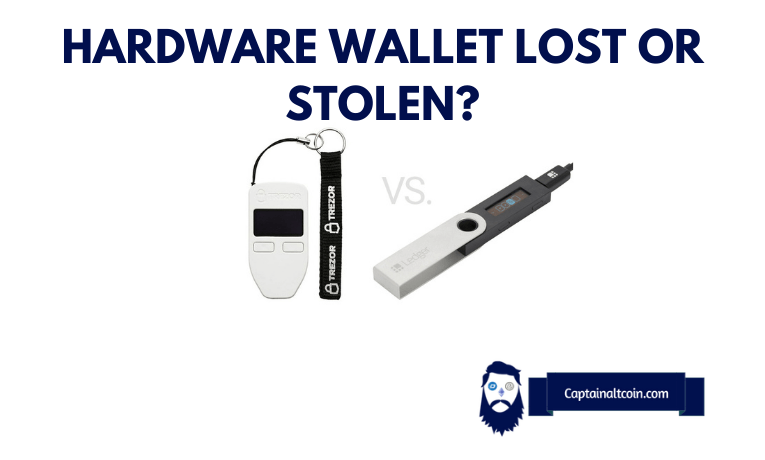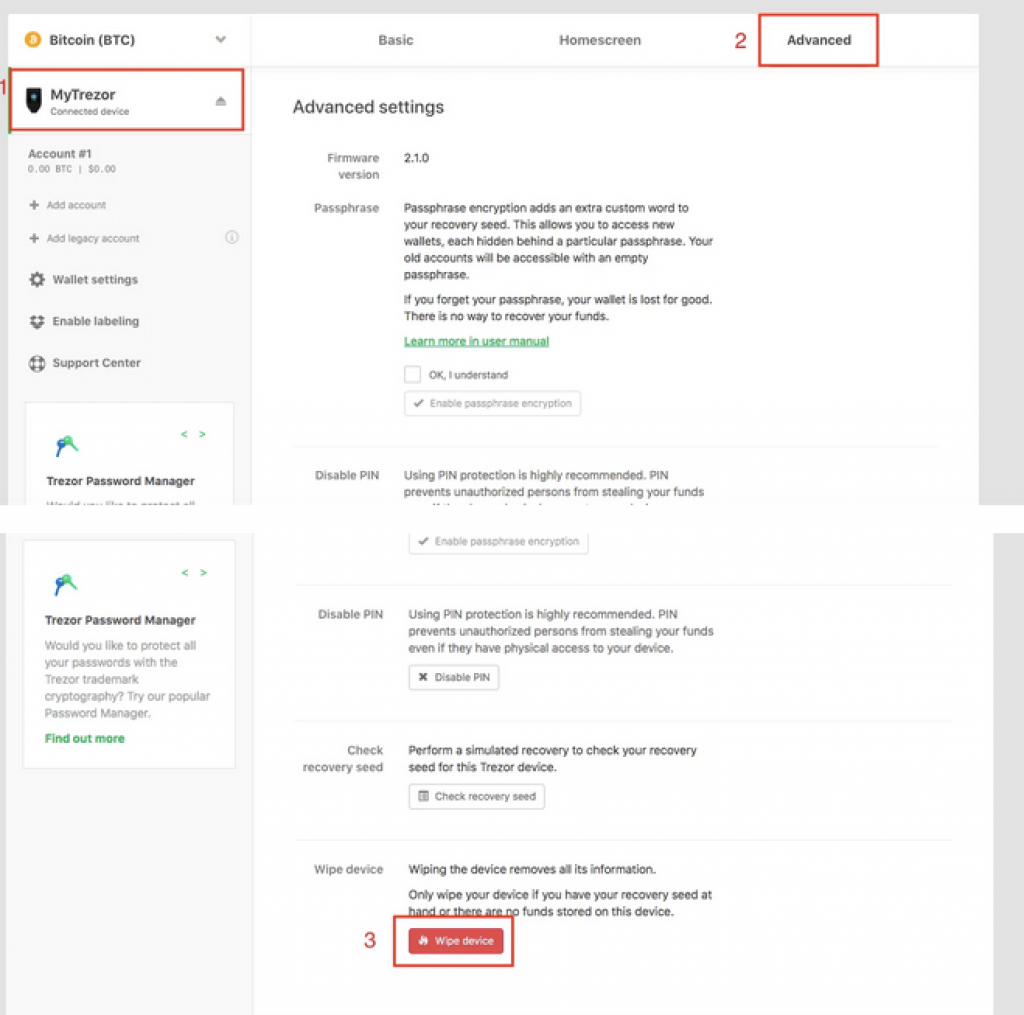
Securing your digital assets is paramount in the world of cryptocurrency, and hardware wallets have emerged as a popular solution. But what happens if you lose or damage your hardware wallet? This article unravels the mystery and guides you through the recovery process.
We’ll explore how hardware wallets like Trezor and Ledger Nano S safeguard your cryptocurrencies and what steps to take if your wallet is lost, stolen, or damaged. From understanding the importance of your wallet recovery seed to the process of regaining access to your treasured cryptocurrencies, we’ve got you covered. So, if you’re wondering about the safety of your digital assets in the event of a lost or damaged hardware wallet, this article is your go-to resource.
| Topic | Details |
|---|---|
| 🔑 Recovery Process | If your hardware wallet is lost, stolen, or damaged, you can recover your cryptocurrencies using your recovery seed (12, 18, or 24 words depending on the wallet). If you lose both your hardware wallet and recovery seed, recovery is not possible. |
| 🔒 Security | Hardware wallets have additional passwords that prohibit access to the contents of the device. Even if your wallet is stolen, if your passphrase is strong, the chances of it getting broken into are slim. |
| 🔄 Recovery Steps | When your wallet is lost or stolen, you should order a new wallet, input your recovery seed into it, access your coins, and move them to new addresses. This is like a reset. If someone steals your wallet, you should make it a priority to order that new wallet and in the meantime, use your recovery phrase to migrate your coins to new addresses via some software wallet. |
| 📱 Hardware Wallets | Guides are provided for both the Trezor hardware wallets (Trezor T and Trezor One) and the Ledger hardware wallets (Ledger Nano X and Ledger Nano S). The process for other devices is likely very similar. |
| 💰 Wallet Prices | Ledger Nano X: $149, Ledger Nano S Plus: $79, Ellipal Titan: $139, Ledger Nano S: $49, Trezor T: $219 |
| 🔄 Detailed Recovery Guide | The article provides a detailed guide on how to recover the coins from a stolen/lost/damaged hardware wallet for both Trezor (Model T and One) and Ledger Nano S. |
What you'll learn 👉
What hardware wallets this works for and what you need
Here we have laid out guides for both the Trezor hardware wallets (Trezor T and Trezor One) and the Ledger hardware wallets – Ledger Nano X and Ledger Nano S. If we haven’t provided a guide for your device do not worry, the process is likely very similar and there should be instructions online, you can likely find this information on the provider’s website, as it is in their best interests to strive to do their best when it comes to keeping customers happy.
While you are here, check out our guides on Ledger vs Trezor comparison, How to send Bitcoin from and to Ledger Nano S, How To Send Ethereum From A Ledger Nano S and Transferring ERC20 Tokens to a Ledger Nano S.
How it’s still recoverable
Simple answer – your coins are not held in your wallet, they “live” on the blockchain that is maintained by miners/stakers. The only thing that your wallet stores are the seed words, a starting point for a chain of cryptographic “miracles” that lead you to your coins.
What happens if you lose or break your cold wallet
When your wallet is lost or stolen, your next move should be ordering a new wallet which you will then use to input your recovery seed into it, access your coins and move them to new addresses (this is like a reset, once the coins are moved from the old addresses, they have nothing to do with the old wallet).
If someone steals your wallet, it makes sense to think that they are trying to get into it. Hardware wallets have additional passwords that prohibit access to the contents of the device. This passphrase is chosen by you and if you did a good job, the chances of it getting broken are slim.
Nevertheless, you should make it a priority to order that new wallet. In the meantime, use your recovery phrase to migrate your coins to new addresses (via some software wallet for the time being), to ensure that your coins are safe. When doing this, you need to make sure you are sending your coins to a wallet that is compatible with all your coins. Otherwise, it will get messy having different coins spread across different wallets.
Before we move on to the detailed guide, here is a quick comparison of the top hardware wallets and a reminder that Ledger launched a new Ledger Stax wallet, whose review you can read here:
| Wallet | Screen | Bluetooth | Supported Coins | Price | Buy |
| Ledger Nano X | Yes | Yes | 1527 | $149 | BUY |
| Ledger Nano S Plus | Yes | No | 1500+ | $79 | BUY |
| Ellipal Titan | Yes | No | 1500+ | $139 | BUY |
| Ledger Nano S | Yes | No | 1527 | $49 | BUY |
| TREZOR T | Yes | Yes | 1800+ | $219 | BUY |
How to recover the coins from a stolen/lost/damaged hardware wallet
Trezor model T or Trezor One
- The method is fairly simple if you are using either a Trezor model T or a Trezor One. Start by going to their website at https://trezor.io/start/ and select the option “create a new wallet”. From here you can securely backup your new seed offline, keeping it safe.

- Make sure to take note of all the public addresses for the coins you are using, this can be done quickly and safely by copy and pasting them into a word document, ensuring they don’t get accidentally altered. If you are struggling to find the address for the coins, click the receive option and it should pop up with your public address
- Next, wipe your device. To do so, go into the advanced section and you will find “Wipe device”

- Now recover the Trezor with the lost device’s word seed. Go to https://trezor.io/start/ and select “Recover Wallet”

- Now you can import your recovery seed that was lost on your device, now you have access to all your activity, assets, etc. from the old device.
- Next send all of your coins to the public keys you previously noted down. (This will send your coins to the new word seed that you have just created)
- Finally, wipe it and then recover the device with the new word seed.
- Great! Now you have your new Trezor with all your cryptoassets secure on it.
Ledger Nano S
- On the Ledger Nano S, the first step you will need to take is resetting your ledger live. To do this, you need to open the application and select the settings icon, scroll down and click “Reset”.

- Next you will be setting up your new Ledger Nano S with a new word seed. Plug in the new Ledger Nano S, open up Ledger Live and click on the “Initialise as new device” option.

- Make sure to back up the word seed offline, a good way of doing this is writing it down and putting it somewhere safe where you won’t lose it.
- Next you will need to copy all of your new public addresses. To do this, click on the receive option for all of the coins that you use and copy the public key that comes up, you will need this address to send all your coins to this new wallet. What can help make this process a bit easier is that all ERC20 tokens share an Ethereum address rather than separate addresses.
- Now you need to reset your Ledger Nano S. This can be done through the settings parts of the device, selecting “Reset All”. If you can’t remember your passcode don’t worry, you can reset after 3 failed attempts.
- Next, reset your Ledger Live.
- Recover the Ledger Nano S with your word seed from the lost device. Go into Ledger Live and click “Restore device from recovery phrase”.

- Now you can follow the steps and import your recovery seed from the lost device
- Now you have access to all of your data again, including assets, balance, your transaction data ect.
- Finally, reset the Ledger Nano S and Ledger Live
- Recover the Ledger Nano S with the new seed. Click “Restore device from recovery phrase” but this time, import the new word seed. You will now have all of your cryptoassets on a new Ledger Nano S with a secure word seed.
Fire resistant safe/box. You can get these quite cheaply.
Metal tumbler seed store like CryptoSteel.
Memorize the seed – the so-called brain wallet.
Conclusion
Hopefully, this guide was helpful in showing you how to recover your crypto, in the unfortunate event of your wallet went missing, was stolen or simply damaged. The key point to remember here is to make sure you have your passphrase and recovery seeds backed up offline and held on different locations to the wallet itself!








